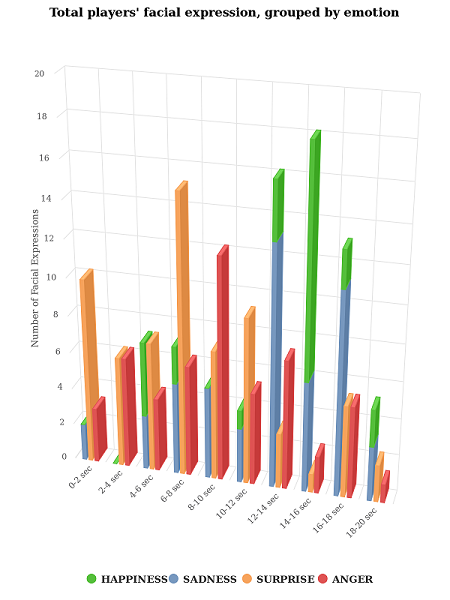Emotion recognition via facial expressions (ERFE) wis utilised in order to complete the process of recognising four universal dominant facial expressions (happiness, anger, sadness and surprise).
Author: Grigorios Kalliatakis, University of Essex (gkallia@essex.ac.uk)
Copyright 2016, all rights reserved.
Release: v1.0
Licence: BSD (see COPYING file)
Emotion recognition via facial expressions (ERFE) is a growing active research field in computer vision compared to other emotion channels, such as body actions and speech, primarily because superior expressive force and a larger application space is provided.
The facial expressions are grouped by the recognised emotions. The recognised emotions can be set visible by clicking the corresponding check-box. The four different emotions are represented by four different colors.
If you use this code for your experiments, please cite:
G. Kalliatakis, N. Vidakis and G. Triantafyllidis
Web-based Visualisation of Head Pose and Facial Expressions Changes: Monitoring Human Activity Using Depth Data
8th Computer Science and Electronic Engineering, (CEEC) (2016)
A copy of the paper is available at:
http://83.212.117.19/FacialExpression3D/
If you would like to file a bug report or a feature request, use the Github issue tracker.
